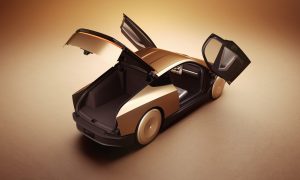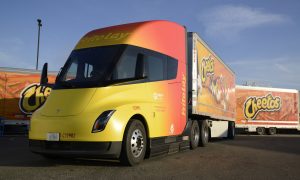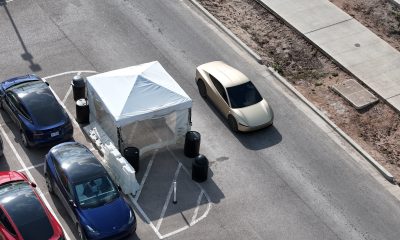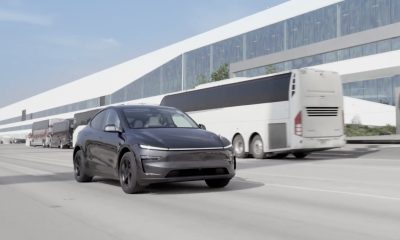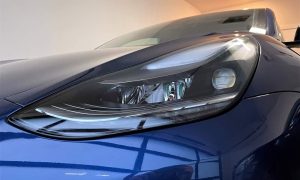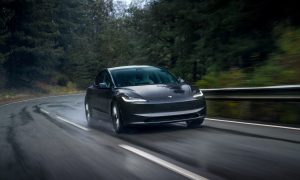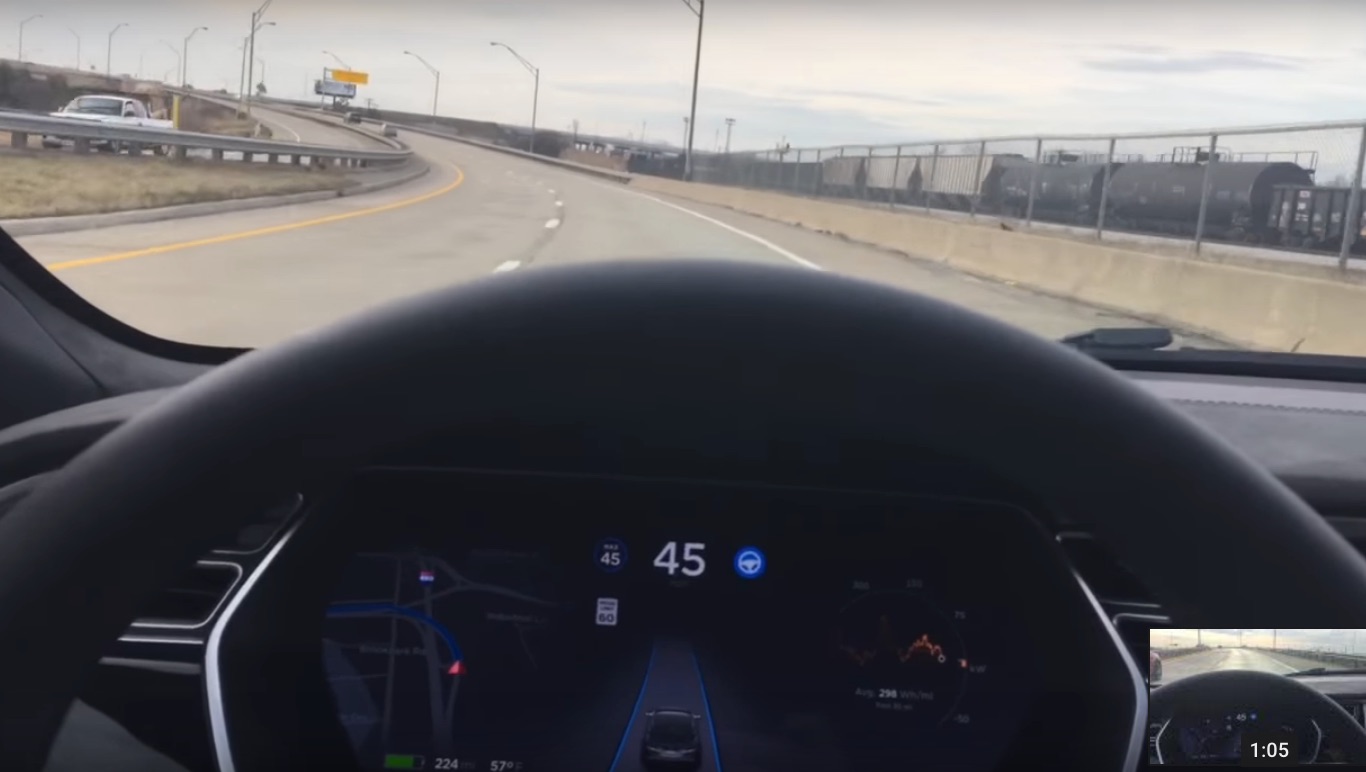

News
Tesla fires back at new class-action suit that alleges “inoperative standard safety features” on Autopilot 2.0 cars
Tesla has been transparent about its Enhanced Autopilot software which the company said would roll out incrementally over time, but that hasn’t stopped HBSS Law firm from filing a new class-action suit today, alleging that Tesla deceitfully sold “inoperative Standard Safety Features” on cars that “lack basic functions featured in cars at half the price”. In question is, what the suit describes as, “nonfunctional” Autopilot 2.0 software, an optional feature available on Model S and Model X vehicles equipped with self-driving hardware.
Tesla responded to the suit, slamming the credibility of the claims being made, stating:
“This lawsuit is a disingenuous attempt to secure attorney’s fees posing as a legitimate legal action, which is evidenced by the fact that the suit misrepresents many facts. Many of the features this suit claims are “unavailable” are in fact available, with more updates coming every month. We have always been transparent about the fact that Enhanced Autopilot software is a product that would roll out incrementally over time, and that features would continue to be introduced as validation is completed, subject to regulatory approval.
Furthermore, we have never claimed our vehicles already have functional “full self-driving capability”, as our website has stated in plain English for all potential customers that “it is not possible to know exactly when each element of the functionality described above will be available, as this is highly dependent on local regulatory approval.” The inaccurate and sensationalistic view of our technology put forth by this group is exactly the kind of misinformation that threatens to harm consumer safety.”
The new class-action suit alleges that the California electric car maker knowingly sold nearly 50,000 vehicles equipped with self-driving Autopilot 2.0 hardware and the promise that Enhanced Autopilot hardware “still has not met Tesla’s promises” and was missing standard safety features.
The suit specifically takes issue with the Enhanced Autopilot feature of Tesla vehicles noting that, “the “Enhanced Autopilot,” for which customers paid an extra $5,000, is ‘essentially unusable and demonstrably dangerous.’”
The Tesla purchase page for the Model S “Tesla’s Enhanced Autopilot software has begun rolling out and features will continue to be introduced as validation is completed, subject to regulatory approval.”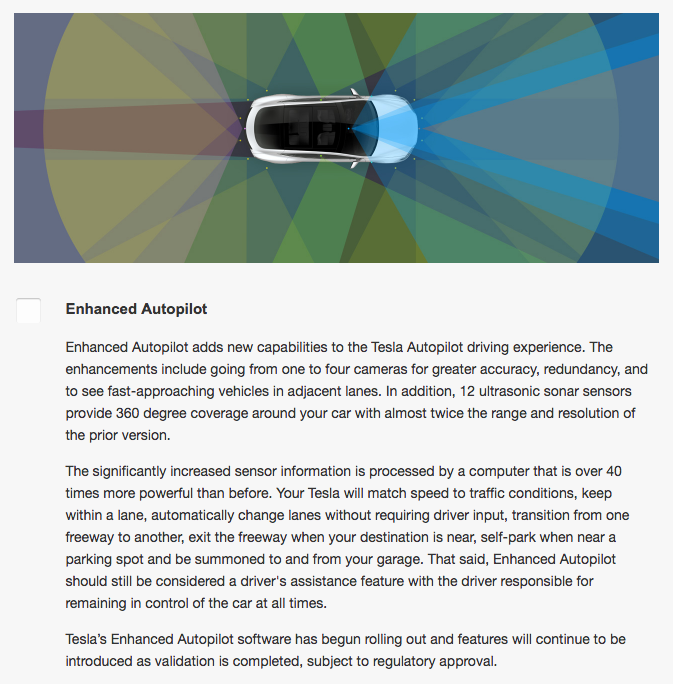
The suit takes issue with the “beta” nature of the Enhanced Autopilot software, alleging that Tesla knew that it could not do what Tesla claimed it would do. It states that “the automaker knew that its software was incapable of upholding its promises to purchasers.”
Steve Berman a managing partner of Hagens Berman which represents the plaintiffs, shared:
“Tesla has endangered the lives of tens of thousands of Tesla owners across the country, and induced them to pay many thousands of dollars for a product that Tesla has not effectively designed. Tesla sold these vehicles as the safest sedan on the road. What consumers received were cars without standard safety enhancements featured by cars costing less than half the price of a new Tesla, and a purported ‘Enhanced Autopilot’ that operates in an erratic and dangerous manner.”
The suit compares the safety features available in Tesla vehicles to those available on “cars costing less than half the price of a new Tesla.” Tesla’s over-the-air update of firmware 8.1 aimed to bring Enhanced Autopilot to near feature parity with Model S and Model X vehicles equipped with first generation Autopilot 1.0. Here’s an excerpt from our coverage of firmware version 8.1, when it was first introduced:
Vehicles equipped with Tesla’s Autopilot 2.0 feature and self-driving sensors, also commonly referred to as “hardware 2” (HW2), will see improvements to Autosteer, lifting a previous speed cap set at 55 mph (88 mkh) to 80 mph (129 kmh). The update also adds the Auto Lane Change feature and Tesla Summon, which until now was only available on first-generation Autopilot cars. Tesla’s Lane Departure Warning feature has also been added to Autopilot 2.0 which will vibrate the steering wheel if the vehicle veers from its intended driving lane when speeds reach above 36 mph (58 kmh).
Berman doesn’t see it that way, stating that “to this day, Tesla has not released truly functional software for its Standard Safety Features or Enhanced Autopilot.”
The suit lists out the specific issues it takes with the “missing” Standard Safety Features:
“Regarding its Standard Safety Features which include automatic emergency braking, front collision warning, side collision warning and auto high beams, Tesla told consumers these features would be available by December 2016 and ‘roll out through over-the-air software updates,’ but to date, only a dangerously defective Traffic Aware Cruise Control has actually come to fruition, according to the suit. The remaining features simply do not exist.”
In scope of the class-action lawsuit are “about 47,000 affected Model S and Model X vehicles.” The suit seeks the value of the standard safety features that do not exist in these cars plus $5,000 for the “nonfunctional Enhanced Autopilot feature” that many owners purchased as an option to their vehicle.
Elon Musk
Tesla doubles down on Robotaxi launch date, putting a big bet on its timeline
Tesla continues to double down on its June goal to launch the Robotaxi ride-hailing platform.
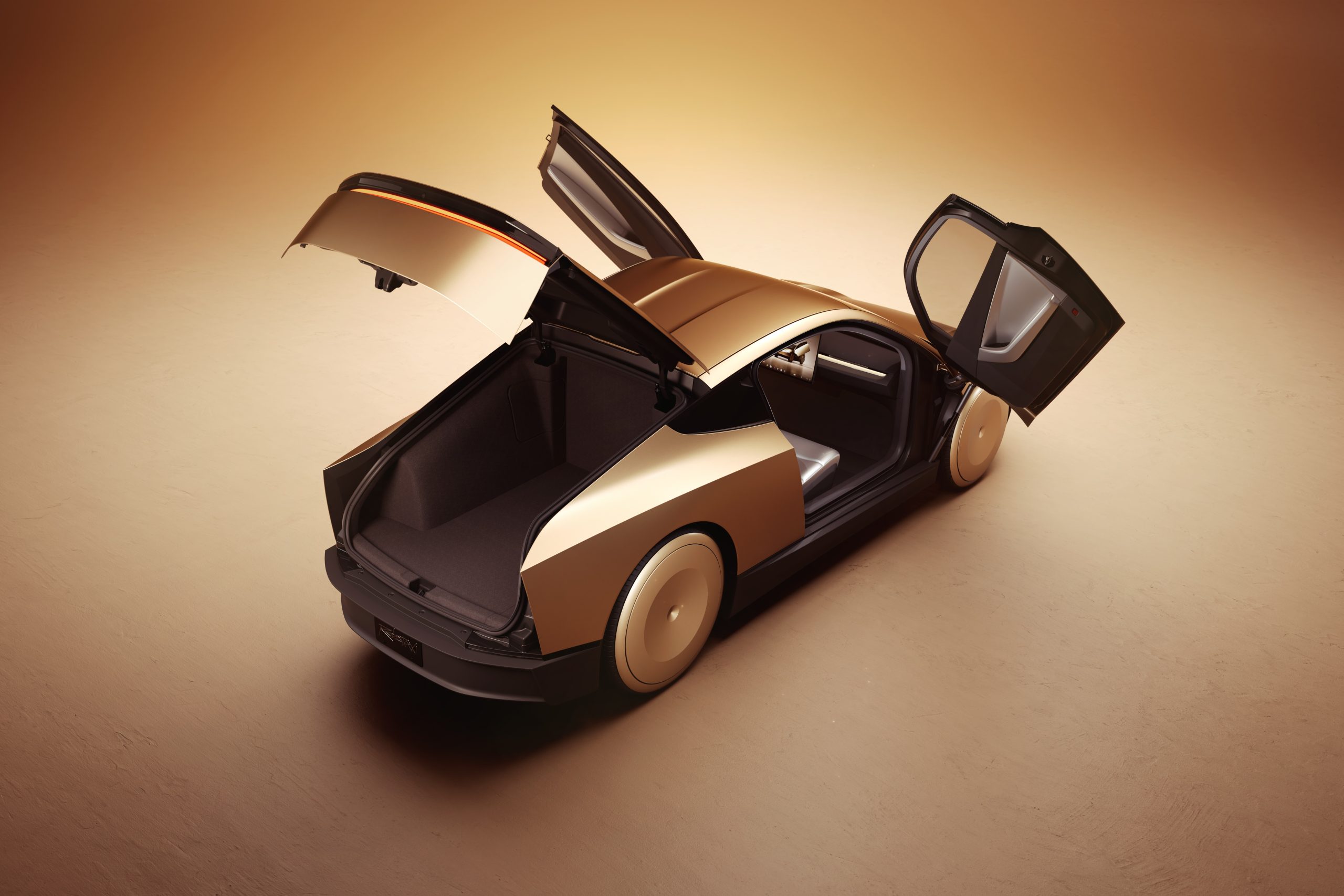
Tesla has doubled down on its potential launch date for the Robotaxi ride-hailing platform, which will utilize the Cybercab and other vehicles in its lineup to offer driverless rides in Austin, Texas.
Tesla said earlier this year that it was in talks with the City of Austin to launch its first Robotaxi rides, and it planned to launch the platform in June.
This has been a widely discussed timeline in the community, with some confident in the company’s ability to offer it based on the progress of the Full Self-Driving suite.
However, others are skeptical of it based on Tesla’s history of meeting timelines, especially regarding its rollout of FSD.
Nevertheless, Tesla was asked when it would be able to offer Robotaxi rides and where, and it clearly is not backing down from that June date:
In Austin, 🔜
— Tesla (@Tesla) April 18, 2025
It is getting to a point where Tesla is showing incredible confidence regarding the rollout of the Robotaxi in June. We have not seen this kind of reiteration regarding the rollout of something regarding autonomy from Tesla at any point in the past.
CEO Elon Musk has even been increasingly confident that Tesla will meet its target. Earlier this week, he said the vehicles will be able to roll off production lines and drive themselves straight to a customer’s house:
Elon Musk continues to push optimistic goal for Tesla Full Self-Driving
There could be some discussion of an acceptable grace period, as the timeline for the Robotaxi rollout could still be considered a success, even if it were a month or two late. However, if it were pushed back further into 2025 or even 2026, skepticism regarding these timelines would continue to persist.
As of right now, it seems Tesla is extremely confident it will meet its goal.
Elon Musk
Tesla Semi fleet from Frito-Lay gets more charging at Bakersfield factory
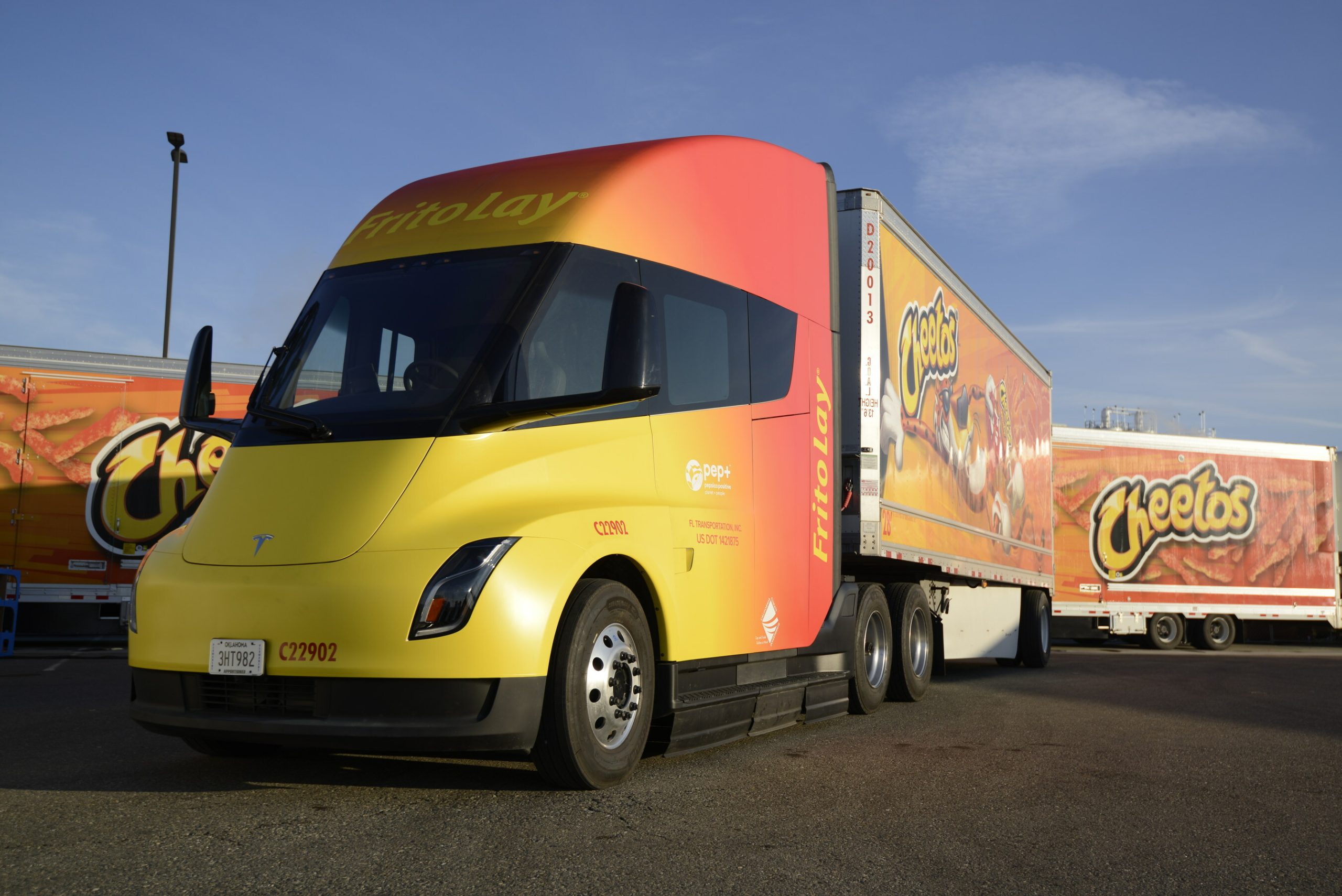
Among the several companies that have had the opportunity to add Tesla Semi all-electric Class 8 trucks to their fleets earlier than others, the most notable is arguably Frito-Lay, which has utilized the vehicle for a couple of years now.
However, as their fleet is making more local runs and there are undoubtedly plans to expand to more Semi units, the company has recognized it needs additional Megachargers to give juice to their trucks.
As a result, Frit-Lay decided to build more chargers at their Bakersfield, California facility, according to new permits filed by Tesla:
🚨 Frito-Lay is building an 8-stall Megacharger array at its factory in Bakersfield, California https://t.co/qARfJjogXF pic.twitter.com/gvorIVxsoc
— TESLARATI (@Teslarati) April 18, 2025
There are already chargers at the company’s Modesto, California, factory, but Bakersfield is roughly three hours south of Modesto.
Interestingly, Tesla is calling the chargers “Semi Chargers” in the filing, potentially hinting that it is no longer referring to them as “Megachargers,” as they have been in the past. This is a relatively minor detail, but it is worth taking note of.
In 2022, Frito-Lay began installing these chargers in preparation for the Semi to become one of the company’s main logistics tools for deliveries in California and surrounding states.
Frito-Lay is not the only company that has chosen to utilize the Tesla Semi for these early “pilot” runs. PepsiCo has also been a company that has used the Semi very publicly over the past two years.
Additionally, the Tesla Semi participated in the Run on Less EV trucking study back in late 2023, where it managed to complete a 1,000-mile run in a single day:
Tesla Semi logs 1,000-mile day in Run on Less EV trucking study
Tesla is planning to ramp production of the Semi late this year. On the Q4 2024 Earnings Call, VP of Vehicle Engineering Lars Moravy said the company would be focusing on the first builds of the Semi’s high-volume design late this year before ramping production in the early portion of 2026:
“We just closed out the Semi factory roof and walls last week in Reno, a schedule which is great with the weather. In Reno, you never know what’s going to happen. But we’re prepping for mechanical installation of all the equipment in the coming months. The first builds of the high-volume Semi design will come late this year in 2025 and begin ramping early in 2026.”
Tesla will build these units at a new Semi production facility located in Reno near its Gigafactory. The company is getting closer to finishing construction, as a drone video from this morning showed the facility is coming along at a good pace:
🚨Tesla Semi factory progress update: pic.twitter.com/dlzIjKwfT3
— TESLARATI (@Teslarati) April 18, 2025
News
Tesla Cybercab no longer using chase vehicles in Giga Texas
Elon Musk expects Tesla to produce about 2 million Cybercab units per year.
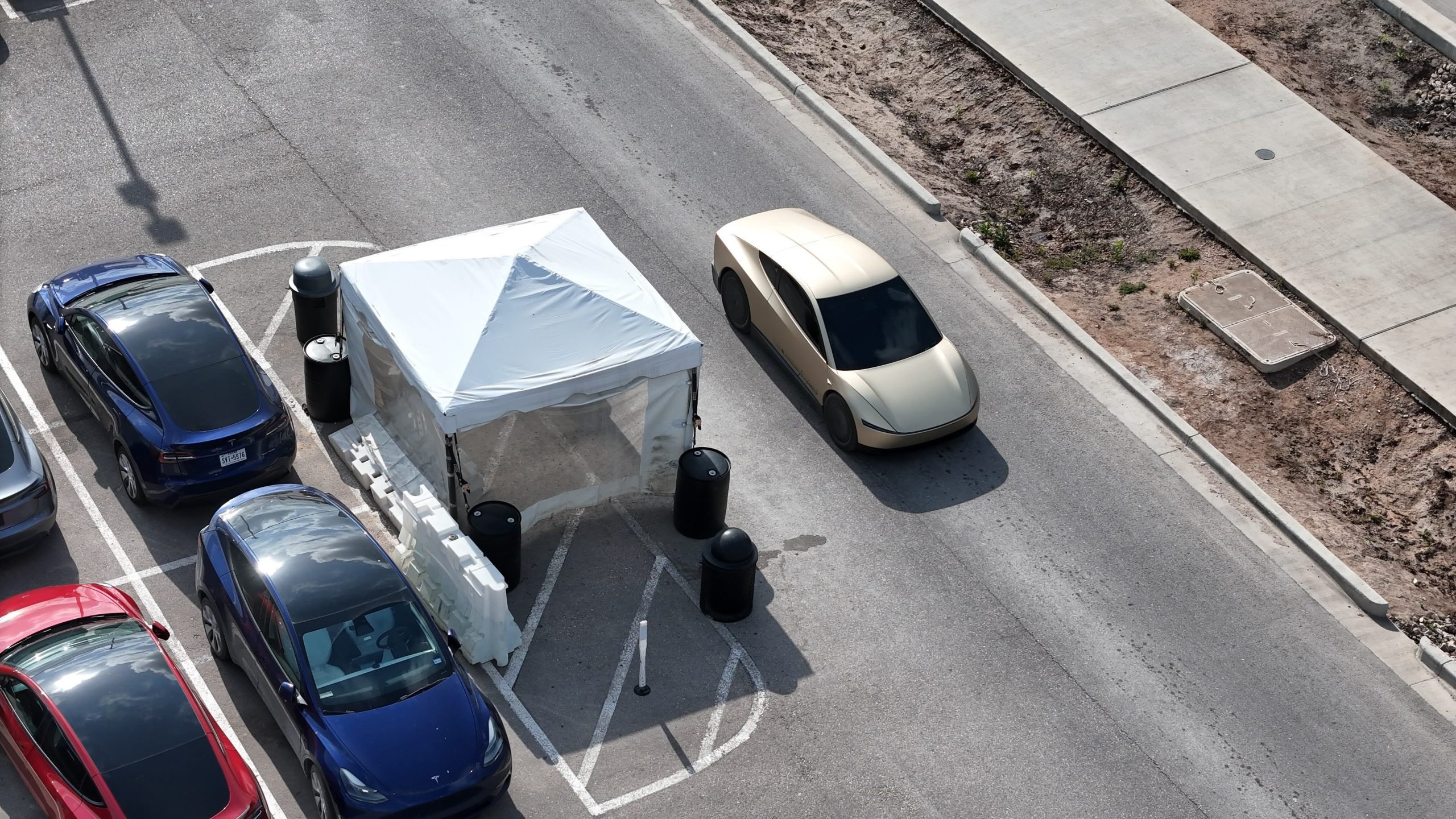
The Tesla Cybercab is the company’s first vehicle that is designed solely for autonomous driving. And while the spacious two-seater is expected to start volume production in 2026, the vehicle’s development seems to be moving at a steady pace.
This was hinted at in recent images taken by a longtime Tesla watcher at the Giga Texas complex.
Tesla Cybercab Production
The Cybercab will likely be Tesla’s highest volume vehicle, with CEO Elon Musk stating during the company’s Q1 2025 All-Hands meeting that the robotaxi’s production line will resemble a high-speed consumer electronics line. Part of this is due to Tesla’s unboxed process, which should make the Cybercab easy to produce.
Elon Musk expects Tesla to produce about 2 million Cybercabs per year. And while the vehicle is expected to see volume production at Giga Texas next year, the CEO noted that the vehicle will be manufactured in more than one facility when it is fully ramped.
No More Chase Cars
While the Cybercab is not yet being produced, Tesla is evidently busy testing the vehicle’s fully autonomous driving system. This could be hinted at by the Cybercabs that have been spotted around the Giga Texas complex over the past months. Following last year’s We, Robot event, drone operators such as longtime Tesla watcher Joe Tegtmeyer have spotted Cybercabs being tested around the Giga Texas complex.
At the time, videos from Giga Texas showed that the driverless Cybercabs were always accompanied by a manually driven Model 3 validation chase car. This was understandable considering that the Giga Texas complex features pedestrians, other cars, and construction areas. As per the drone operator in a recent post on social media platform X, however, Tesla seems to have stopped using chase cars for its Cybercab tests a few weeks ago.
Aggressive Tints
The reasons behind this alleged update are up for speculation, though it would not be surprising if the Cybercab’s autonomous driving system could now safely navigate the Gigafactory Texas complex on its own. Interestingly enough, the Cybercabs that were recently photographed by the drone operator featured very aggressive tint, making it almost impossible to make out the interior of the robotaxi.
This is quite interesting as other Cybercabs that have been spotted around Giga Texas were only equipped with semi-dark tints. One such vehicle that was spotted in February was even speculated to be fitted with an apparent steering wheel.
-
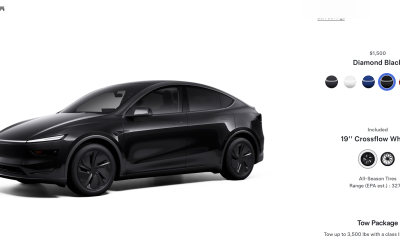
 News2 weeks ago
News2 weeks agoTesla rolls out new, more affordable trim of the Model Y Juniper in U.S.
-
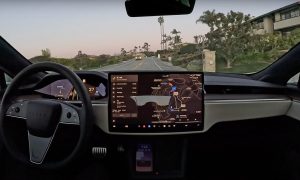
 News2 weeks ago
News2 weeks agoTesla expands Early Access Program (EAP) for early Full Self-Driving testing
-
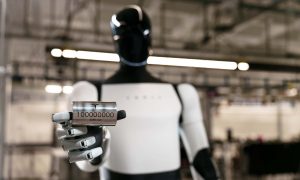
 News2 weeks ago
News2 weeks agoTesla celebrates key milestone for 4680 battery cell production cost
-
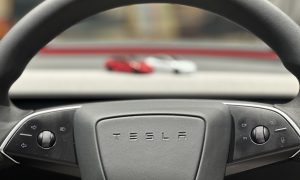
 Investor's Corner2 weeks ago
Investor's Corner2 weeks ago“Nothing Magnificent about Tesla (TSLA),” claims Jim Cramer
-

 News2 weeks ago
News2 weeks agoI took a Tesla new Model Y Demo Drive – Here’s what I learned
-
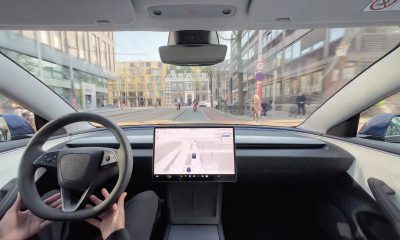
 News2 weeks ago
News2 weeks agoTesla Europe shares FSD test video weeks ahead of launch target
-
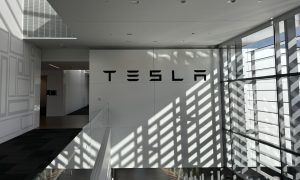
 News2 weeks ago
News2 weeks agoThis Tesla executive is leaving the company after over 12 years
-
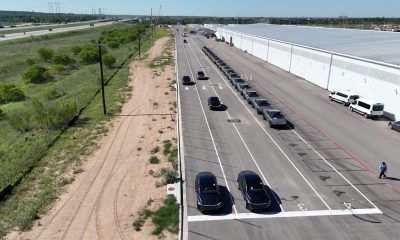
 News2 weeks ago
News2 weeks agoTesla’s Giga Texas vehicles now drive themselves to outbound lot

